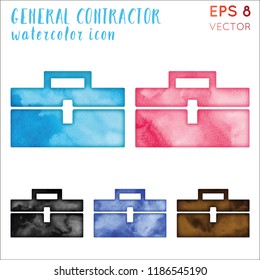Discover Exactly How Seasonal Impacts Can Impact The Effectiveness Of Commercial Outside Painting And Discover One Of The Most Beneficial Times To Make Certain Resilient Results For Your Task
Discover Exactly How Seasonal Impacts Can Impact The Effectiveness Of Commercial Outside Painting And Discover One Of The Most Beneficial Times To Make Certain Resilient Results For Your Task
Blog Article
Authored By-Fox Chaney
When you're planning a business exterior paint task, seasonal variables can make or break your outcomes. You'll wish to think about exactly how temperature level and humidity effect paint application and drying times. Choosing visit this web-site can ensure your paint sticks appropriately and lasts much longer. But which periods are truly the best for this sort of job? Let's check out the crucial elements that can influence your job's success.
The Effect of Temperature on Paint Application
When you're planning an industrial outside painting task, the temperature level can significantly impact how well the paint sticks and dries out.
Ideally, you wish to paint when temperature levels vary in between 50 ° F and 85 ° F. If simply click the following internet site 's also chilly, the paint may not heal correctly, causing concerns like peeling or splitting.
On the other hand, if it's also warm, the paint can dry also rapidly, stopping appropriate attachment and leading to an uneven surface.
You need to likewise think about the time of day; morning or late afternoon offers cooler temperature levels, which can be much more beneficial.
Constantly check the supplier's recommendations for the particular paint you're using, as they commonly supply advice on the ideal temperature range for optimal outcomes.
Humidity and Its Effect on Drying Times
Temperature isn't the only environmental variable that influences your business outside paint task; moisture plays a significant duty too. High moisture degrees can slow down drying times considerably, impacting the total high quality of your paint task.
When the air is filled with moisture, the paint takes longer to treat, which can cause problems like poor attachment and a greater risk of mold development. If you're painting on an especially damp day, be planned for prolonged wait times between coats.
It's critical to keep an eye on neighborhood climate condition and strategy appropriately. Preferably, go for humidity degrees between 40% and 70% for optimum drying.
Keeping these factors in mind guarantees your task stays on track and provides a long lasting coating.
Best Seasons for Commercial Outside Painting Projects
What's the best season for your commercial external paint tasks?
Springtime and early fall are typically your best bets. Throughout these periods, temperature levels are light, and humidity levels are usually lower, developing ideal conditions for paint application and drying.
Avoid summer season's intense heat, which can cause paint to completely dry too quickly, bring about poor bond and finish. Similarly, wintertime's cold temperatures can hinder proper drying and treating, risking the longevity of your paint task.
Aim for days with temperatures between 50 ° F and 85 ° F for ideal outcomes. Bear in mind to examine the local weather forecast for rain, as wet conditions can spoil your job.
Preparation around these variables ensures your paint project runs smoothly and lasts much longer.
Final thought
Finally, intending your industrial external painting tasks around seasonal factors to consider can make a significant difference in the result. By scheduling work throughout the ideal temperature levels and moisture degrees, you'll ensure better adhesion and drying times. Remember to watch on local weather forecasts and choose the correct time of year-- spring and early loss are your best options. Taking https://elliottymwhr.wssblogs.com/34371935/looking-for-top-notch-house-painters-discover-the-essential-suggestions-for-an-amazing-home-makeover-that-can-boost-your-home-value-by-almost-7 will certainly assist you accomplish a durable and professional finish that lasts.
